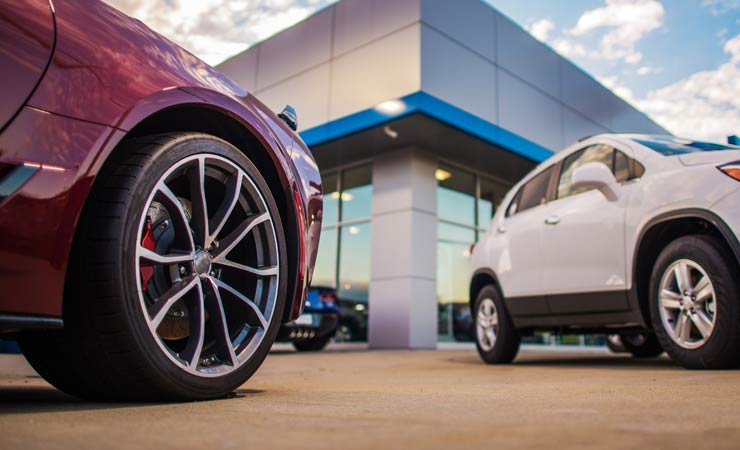
Buying a car is a significant step for many new drivers. The first car usually accompanies them for several years and greets them on public roads. This process can seem overwhelming, especially for newbies with no buying experience. This makes it all the more important to make preparations for buying a car.
In this article, we'll look at how to master the car purchase process.
Step 1: Clarify your own needs
Many new drivers already have a rough idea of which car they want to accelerate in. However, before you delve too deeply into the subject of “dream cars”, you should know your needs as a newbie to driving. In principle, not every car is suitable for new drivers.
This is partly because powerful or difficult-to-use models can be overwhelming. Furthermore, you can…
- high maintenance costs pose a financial challenge.
- complex technology is practically a challenge.
A beginner-friendly car, on the other hand, makes getting used to it easier overall. This allows accidents to be prevented.
The choice of your first car should therefore differ somewhat from your own ideas – insofar as these include buying a powerful and expensive car.
When making a decision, more consideration should be given to the individual needs of your own driving skills.
Here are two needs that new drivers should reflect on before choosing their first car:
Transportation requirements
In the first step, novice drivers are faced with the decision to select a car type class. Just like with experienced drivers, your own preference comes first. This should be based on circumstances such as vehicle use and the surrounding area.
If the car is mainly needed for the daily commute to work or school, good fuel efficiency and suitability for everyday use could be important – in this case, new drivers are advised to choose a small car. However, if longer distances need to be covered on a regular basis, a larger car with more space might be a better choice – compact classes can be a better choice here.

Personal preferences
Another need relates to the aesthetic and functional aspects of a car. The appearance, drive type, brand and available features contribute to the driving experience.
And although the first car may not be the car of your dreams, it can be configured to suit your personal preferences.
For example, you could use your dream car as inspiration and buy an older version with similar features.


Step 2: Set an all-round budget
In addition to your own needs, your budget must also be taken into account when buying a car. Buyers without buying experience in particular should set realistic financial limits for themselves in advance. Buying a car is a costly affair, which is often accompanied by financing via car loans. A clearly defined budget is important and allows you to avoid unexpected financial burdens.
The defined budget does not only focus on the acquisition costs of a vehicle. Here are the three issues new drivers should know before choosing their first car:
I. Acquisition costs
The acquisition costs when buying a car are the costs specified by the dealer. They usually include the vehicle price, taxes and fees.
A defined budget should take these costs into account as a first step.
This creates a clear awareness of the amount needed to finance the car.


II. Insurance costs
Insurance costs have a further influence on the overall budget. These should be checked before buying a car. Otherwise there is a risk that the insurance is too high and debts arise. In principle, smaller type classes with less performance have cheaper insurance rates. Looking at the type class of the vehicle in step 1, transport requirements, is therefore particularly important.
III. Maintenance costs
In addition to the purchase price, new drivers should consider the long-term maintenance costs. A look at fuel efficiency, spare parts availability and workshop costs is important here.
A car with better fuel economy can prove to be more cost-effective over time.
The purchase of an electric car is particularly highlighted in this context. Electric mobility offers various savings advantages for drivers.


Step 3: Start preparing for the purchase
After individual needs and the all-round budget have been clearly defined, targeted preparation for the car purchase begins. Purchase preparation is aimed at ensuring a successful car purchase. This is guaranteed if…
- personal vehicle requirements can be met.
- the financial framework is adhered to.
After step 3, the novice driver can contact their desired dealer or visit them directly at their car dealership. Here are three preparations new drivers should make before buying their first car:
Conduct research
Conclusive research while preparing to purchase is essential to ensure an informed car purchase.
By collecting information about vehicle reviews, comparing models and checking customer reviews, important criteria can be filtered.
This filtering helps to understand the advantages and disadvantages of different models. In this way, your own needs can be refined again.


Dealer choice
Choosing a dealer carefully is also crucial: New drivers should compare different car dealers. This process can already take place online. When making your choice, you should particularly evaluate the reliability of the seller.
The evaluation can be done online based on customer reviews, recommendations and experiences of other buyers. Overall, careful dealer selection can ensure that the experience from vehicle purchase to transaction is positive and trustworthy.
Develop negotiation skills
For many car owners, a certain amount of negotiating skills are part of a successful vehicle purchase.
It is irrelevant whether the car is bought from private dealers or from a car dealership.
Because the basic idea of negotiation remains the same: an advantage is gained from the purchase that was not previously included in the purchase conditions specified. A good negotiation could potentially influence the purchase price or mean other benefits such as a free tire change. A tactical approach and a willingness to compare different offers can help you get the best deal.
Finale: Buying your first car
With the purchase preparation completed, novice drivers now face the most exciting step – the final car purchase. The newcomers can clarify any final questions in direct contact with the dealer. Furthermore, car buyers are always advised to take a test drive. These rides give them the opportunity to experience the driving experience first hand before purchasing. Personal preferences and concerns can be reviewed again before a final purchasing decision is made.
Once you have decided on a car, it is also important to have the necessary documents ready. This includes your ID card, driving license and relevant financial documents (for financing). To avoid unpleasant surprises, it is also advisable to have an experienced and well-known car buyer with you. Furthermore, the entire purchase process should be well documented to ensure a smooth transition to owning your first car.
Source: https://blogg.de/autokauf-fuer-neulinge/


